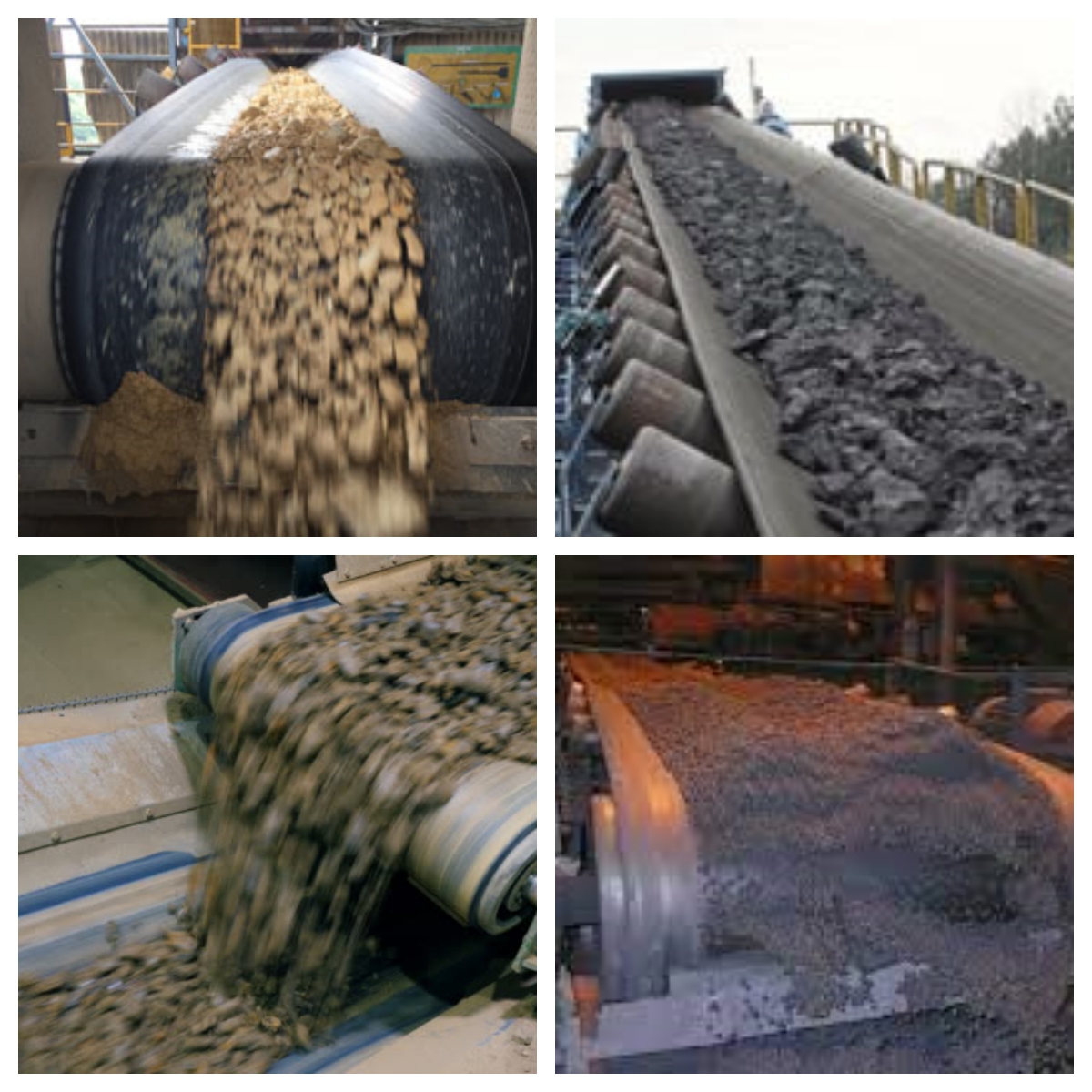Belt conveyor for slag is a specific type of conveyor system designed for handling slag,Conveyor belts are usually made of durable materials such as heat-resistant rubber or special coatings to withstand the abrasiveness and high temperatures of the slag. The belt is supported and guided by rollers or pulleys, ensuring its proper alignment and movement.
The primary purpose of a belt conveyor for slag is to transport the slag from one location to another, such as from a production facility to a storage area or disposal site. The conveyor system enables efficient handling of the slag, facilitating its removal, disposal, or further processing as required by the particular industrial process.
The slag belt conveyor is suitable for various industries that require slag treatment. Here are some common applications for slag belt conveyors:

Iron and Steel Industry: For the treatment of slag from steelmaking processes, such as blast furnace operations or steelmaking. They transport slag from the production site to designated areas for further processing, storage or disposal.
Metal Smelting and Refining: Used in metal smelting and refining facilities where slag is produced as a by-product. They transport the slag to an appropriate location for further processing or disposal, ensuring efficient and safe handling of this material.
Foundries: Foundries that produce metal castings often generate slag during the casting process. Belt conveyors are used to transport foundry slag to designated areas for processing or disposal. This helps maintain a clean and organized work environment.
Power plants: Transport ash from boilers to storage or disposal areas to facilitate proper ash management.
Cement plant: The cement plant adopts slag belt conveyor and uses slag as auxiliary cementitious material. Conveyors transport slag from the production site to mixing or grinding units, ensuring a continuous supply of slag in cement production.
Waste-to-energy plants: Waste-to-energy plants that convert waste into energy produce slag in the form of residue. Belt conveyors are used to transport slag to designated areas for further processing or disposal, contributing to effective waste management.
1. Efficient transportation: The slag can be efficiently and smoothly transported from one location to another. They are capable of handling large volumes of material, ensuring a continuous and reliable flow of slag throughout the process. This helps to optimize production and minimize downtime.
2. Enhanced safety: Slag is hazardous due to its abrasiveness, high temperature and potential dust emissions. The slag belt conveyor is designed with safety features such as emergency stop buttons, safety guards and protective covers to ensure the safety of operators and prevent accidents. Proper containment of slag within the conveyor system also reduces the risk of environmental contamination.
3. Durability and reliability: Made of strong materials and components that can withstand the abrasiveness of the material and its high weight. Belts, pulleys, pulleys and support structures are designed for long-term use in harsh operating conditions, ensuring durability and reliable performance.
4. Heat resistance: Slag may have high temperature, especially when it is just produced. Slag belt conveyors are equipped with heat-resistant belts and components that can withstand high temperatures without deformation or damage. This allows for safe and efficient handling of hot slag.
5. Reduced physical labor: By automating slag transport, belt conveyors eliminate or reduce the need for manual handling. This minimizes physical strain on workers and improves overall operational efficiency.
6. Flexibility and customization: Slag belt conveyors can be customized to meet specific application requirements. They can be designed to accommodate various inclinations, lengths and widths, allowing flexibility in layout and configuration. This ensures that the conveyor system can be tailored to the available space and optimize material flow.
| Model | Belt Width (mm) | Lenth(m) | Belt Speed (m/s) | Lifting Height | Slope Angle | Capacity (m³/h) |
| DY-500 | 500 | Max.20 | 0.8-2.0 | adjustable | 0-30 | 50-140 |
| DY-650 | 650 | Max.20 | 0.8-2.0 | adjustable | 0-30 | 100-250 |
| DY-800 | 800 | Max.25 | 0.8-2.0 | adjustable | 0-30 | 170-350 |
| DY-1000 | 1000 | Max.25 | 0.8-2.0 | adjustable | 0-30 | 270-550 |

1. Heavy Duty Construction: Constructed with strong materials and components to withstand the abrasiveness of the slag and its high weight. A strong steel frame, reinforced belts, and durable rollers and pulleys are often used to ensure the longevity and reliability of the conveyor.
2. Heat resistance: The belt conveyor should be designed to withstand high temperatures. Heat-resistant belts and components, such as heat-resistant rubber or special coatings, are used to prevent damage or deformation of the conveyor due to the heat generated by the slag.
3. Abrasion resistance: Conveyor belts and other contact surfaces are usually made of wear-resistant materials, such as rubber compounds or special coatings, to withstand the abrasive effects of slag.
4. Cleaning mechanism: Slag will adhere to the conveyor belt or accumulate on the surface, affecting its performance and efficiency. Slag belt conveyors are often equipped with cleaning mechanisms such as scrapers or brushes to remove any debris or residual material and keep them running smoothly.
5. Proper sealing: Slag may contain dust or contain fine particles that may escape from the conveyor causing environmental concerns or safety hazards. Confine the slag within the conveyor system and minimize dust emissions with sealing mechanisms such as skirts, dust covers or enclosures.
6. Safety Precautions: Slag handling may involve dangerous situations, so safety features such as emergency stop buttons, safety guards and guardrails are essential to protect operators and prevent accidents. Proper training and adherence to safety protocols are also critical when operating a slag belt conveyor.
Address:China,Yanjin county forest park gate to the west 1000 meters north road.